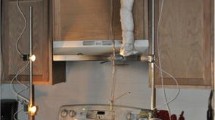Abstract
Data from two full-scale residential smoke alarm fire test series were analyzed to estimate the performance of dual sensor photoelectric/ionization alarms as compared to co-located individual photoelectric and ionization alarms. Dual alarms and aggregated photoelectric and ionization alarm responses were used to estimate dual alarm performance. It was observed that dual alarms with equivalent or higher sensitivity settings performed better than individual photoelectric or ionization alarms over a range of flaming and smoldering fire scenarios. In one test series, dual alarms activated 539 s faster than ionization alarms and 79 s faster than photoelectric alarms on average. In another test series, individual alarm sensor outputs were calibrated against a reference smoke source in terms of light obscuration over a path length (percent smoke obscuration per unit length) so that alarm thresholds could be defined by the sensor outputs. In that test series, dual alarms, with individual sensor sensitivities equal to their counterpart alarm sensitivities, activated 261 s faster on average than ionization alarms (with sensitivity settings of 4.3%/m smoke obscuration for the ionization sensors) and 35 s faster on average than the photoelectric alarms (with sensitivity settings of 6.6%/m, for the photoelectric sensors.) In cases where an ionization sensor was the first to reach the alarm threshold, the dual alarm activated 67 s faster on average than the photoelectric alarm. While in cases were a photoelectric sensor was the first to reach the alarm threshold, the dual alarm activated 523 s faster on average than the ionization alarm. Over a range of ionization sensor settings examined, dual alarm response was insensitive to the ionization sensor setting for initially smoldering fires and fires with the bedroom door closed, while dual alarm response to the kitchen fires was very sensitive to the ionization sensor setting. Tests conducted in the National Institute of Standards and Technology (NIST) fire emulator/detector evaluator showed that the ionization sensors in off-the-shelf ionization alarms and dual alarms span a range of sensitivity settings. While there appears to be no consensus on sensitivity setting for ionization sensors, it may be desirable to tailor sensor sensitivities in dual alarms for specific applications, such as near kitchens where reducing nuisance alarms may be a goal, or in bedrooms where higher smoke sensitivity may be a goal.



















Similar content being viewed by others
References
Bukowski RW, Waterman TE, Christian WJ (1975) Detector sensitivity and siting requirements for dwellings: report of the NBS Indiana dunes tests. No. SPP-43 Nat Fire Prot Assn, Quincy, MA, USA
Johnson PF, Brown SK (1986) Smoke detection of smoldering fires in a typical Melbourne dwelling. Fire Technol 22(4):295–340
Meland O, Lonvik LE (1991) Detection of smoke: full-scale fire tests with flaming and smoldering fires. In: Cox G, Langford B (eds) Fire safety science, proceeding of the third international symposium, Edinburg, Scotland, July 8–12, 1991. Elsevier Science Publications, pp 975–984
Bukowski RW, Peacock RD, Averill JD, Cleary TG, Bryner NP, Walton WD, Reneke PA, Kuligowski ED (2008) Performance of home smoke alarms, analysis of the response of several available technologies in residential fire settings. Natl Inst Stand Technol, Tech note 1455-1
Su JZ, Crampton GP, Carpenter DW, McCartney C, Leroux P (2003) Kemano fire studies––part 1: response of residential smoke alarms. National Research Council of Canada, Ottawa, Canada, April, Research report 108
UL 217 (1996) Standard for safety single and multiple station smoke alarms, and UL 268: standard for smoke detectors for fire protective signaling systems, 4th edn. Underwriters Laboratories Inc., Northbrook, IL, USA
CAN/ULC-S531-M87 (1995) Standard for smoke alarms, 1995 edn. Underwriter’s Laboratories of Canada, Toronto, ON, Canada, pp 1–86
Cleary TG (2001) Fire emulator/detector evaluator: design, operation, and performance. In: Beall K, Grosshandler WL, Luck H (eds) Proceeding of the international conference on automatic fire detection “AUBE ‘01”, March 25–28, 2001, Gaithersburg, MD, USA. Natl Inst Stand Technol, NIST SP 965, February 2001, pp 312–323
Author information
Authors and Affiliations
Corresponding author
Rights and permissions
About this article
Cite this article
Cleary, T. Performance of Dual Photoelectric/Ionization Smoke Alarms in Full-Scale Fire Tests. Fire Technol 50, 753–773 (2014). https://doi.org/10.1007/s10694-010-0147-z
Received:
Accepted:
Published:
Issue Date:
DOI: https://doi.org/10.1007/s10694-010-0147-z




